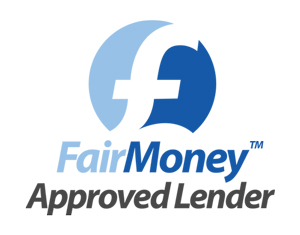Investing: get the full picture before you risk peer-to-peer

Platforms such as Zopa offer higher rates than banks and building societies for those ready to take chances
Are your savings at risk of being overthrown by dark forces, never to be seen again? Marc Chagall’s La Révolution and Raoul Dufy’s Les Régates (The Regatta) were allegedly pledged as security on FundingSecure, a peer-to-peer platform that promised small savers returns of 16% a year. But the company collapsed in October, putting at risk £80m of savers’ cash. The art dealer who pledged the works – but appeared not to physically hand them over – simply sold them to someone else.
Peer-to-peer (P2P) lenders promise better interest rates than the banks, using the internet to link up savers with prospective borrowers. Zopa, RateSetter and Funding Circle are the biggest players, and account for the bulk of the £6bn that will flow through P2P platforms this year, according to data from Brismo and Link Group.
Fears are growing after the collapse of two platforms this year, and delays of 100 days or more to withdraw money from Funding Circle. The Financial Conduct Authority is introducing new rules amid concerns that small investors are being drawn in without understanding the risks.
The worst collapse so far was in May when Lendy, the chief sponsor of Cowes Week, went under with £160m in loans outstanding, of which £90m were in default. “It’s the wild west out there,” says Roger Gewolb, who set up FairMoney.com, another lender. “Time and again we are seeing these companies failing and collapses becoming more inevitable. Why isn’t anyone saying anything?. The Bank of England must now look after these platforms and, if not, there must be deposit protection.”
How risky is it?
Potentially very risky. Crucially, there is no deposit protection for lenders. If the company goes bust, you may get back nothing, unlike deposits at banks and building societies, which are protected up to £85,000. Savers have to decide if the extra interest paid is worth the risk.
Critics warn that investors can rarely see what’s under the bonnet in these companies, or the quality of borrower. The Bank of England sends in examiners to banks to scrutinise lending. In P2P, it’s up to the platform to disclose who they are lending to, and most don’t.
A study published this week by Gianfranco Gianfrate, professor of finance at EDHEC, one of Europe’s leading business schools, warns of the perils. It studied 6,000 loans on 73 P2P platforms and concluded that “the returns are not consistent with the riskiness borne by lenders”.
Default rates are published by some of the P2P platforms, and show they are running at higher levels than in the past.
Rhydian Lewis, chief executive at RateSetter, says his company is more transparent than the banks about risks and defaults. “The Bank must look at risk at a bank because depositors can’t. We offer investments, and publish a range of information including our lending criteria and who we lend to, along with detailed data on lending performance and how we manage risk. Try asking your bank for this.”
How much can I earn?
Zopa offers savers up to 5.2%. RateSetter is giving a maximum of 5%, but this is soon to drop to 4%. Funding Circle pays up to 6.5%. Smaller players such as Relendex and Twino are offering up to 11%. Higher headline rates inevitably translate into higher risk.
How long will it take to get my money out?
This is a matter of concern – unlike with a bank, you can’t just ask for your money back. Funding Circle is currently in the centre of a storm over withdrawal issues. Investors wanting an early exit have to sell their loans on to other investors – but with low demand, the average time taken to withdraw has jumped from just a few days to as much as four months. The company says it is introducing new tools to enable investors to access funds more quickly and regularly.
At the other players, withdrawal times are much shorter. Zopa says: “It takes about six days to retrieve the lump sum, but investors will start receiving their money in their holding account from the day the request has been accepted.” RateSetter says investors “have been able to access their money within an average of one day”. But there are fees to withdraw early: Zopa charges 1%, while RateSetter operates a scale of up to 90 days’ interest on its higher-paying accounts.
How much you can invest?
From 9 December, new investors will have to certify that they are putting no more than 10% of their investable assets into P2P loans. This will rely on the honesty of savers – the likes of Zopa can’t demand all your financial details – but is part of a drive by regulators to “prevent harm to investors”.
Is there a future for P2P?
Funding Circle is the only major platform traded on the stockmarket – and its shares have tanked. This week it was trading at 100p, compared to 440p a year ago. John Cronin, analyst at brokers Goodbody, a fintech and banking specialist, said he expected the sector to move away from attracting small investors and instead become platforms for institutions to deposit large sums to be lent on to small businesses and other borrowers not well-served by the mainstream banks. But Jeffrey Mushens of industry group Tisa says: “So long as the rates are commensurate with the level of risk, it’s right that consumers have this choice, and investing in P2P should be treated like any other asset class. If you are not certain, take financial advice.”


